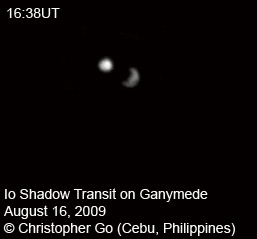 The Planetary Science Decadal Survey is now well underway as the community discusses how NASA should spend its money in the discipline over the decade from 2013 to 2023. For the outer planets, the previous decadal survey made a Pluto flyby mission and a Jupiter atmospheric orbiter two of its main priorities. These mandates later morphed into the New Horizons and Juno missions. At this point in the process this go around, various groups in the community are producing white papers, documents that provide details as to what should be the priorities over the next decade for their subject, be it technology, planetary astronomy, Titan, Europa, or Io, for example. NASA's Outer Planets Assessment Group (OPAG) website has several drafts for some of these white papers, including the latest draft of the Io white paper. Additional submitted white papers can be found on the decadal survey website (check out some of the ones at the bottom of that page for a laugh).
The Planetary Science Decadal Survey is now well underway as the community discusses how NASA should spend its money in the discipline over the decade from 2013 to 2023. For the outer planets, the previous decadal survey made a Pluto flyby mission and a Jupiter atmospheric orbiter two of its main priorities. These mandates later morphed into the New Horizons and Juno missions. At this point in the process this go around, various groups in the community are producing white papers, documents that provide details as to what should be the priorities over the next decade for their subject, be it technology, planetary astronomy, Titan, Europa, or Io, for example. NASA's Outer Planets Assessment Group (OPAG) website has several drafts for some of these white papers, including the latest draft of the Io white paper. Additional submitted white papers can be found on the decadal survey website (check out some of the ones at the bottom of that page for a laugh).The Io white paper being authored by Dave Williams from ASU with many others, including myself, in the Io community providing input. The paper is split up into two parts: Part 1 discusses why exploring Io should be important to the rest of the community and what kinds of science goals are needed for a future mission to the satellite; Part 2 explores the types of missions that should be sent to Io in the next decade and beyond.
While the first part of the white paper roughly follows the document from the previous decadal survey, explaining why exploration of Io is important, the second parts provides updates for recommendations to the NASA Space Science Division for future Io exploration:
- A balanced program between life-focused and general exploration missions
- A more modest (compared to EJSM) 'Io Observer' Discover- or New Frontiers-class mission
- The support of the IVO mission, currently being studied for the next Discovery AO
- New Frontiers-class mission concepts for the next New Frontiers AO that allows radioisotope power sources
- An Io orbiter in the 2023-2033 timeframe to follow-up on the discoveries of a Jupiter-orbiting 'Io Observer'
- Io in-situ missions in the same timeframe, including penetrators, landers, and rovers that would help constrain the size and physical state of Io's core and better understand Io's surface and lower atmospheric chemistry
- A space-based ultraviolet telescope to replace Hubble with diffraction-limited capability in the next decade
- Long-lived Jupiter missions that would provide opportunities to observe Io over long-time frames (Juno and EJSM may provide these types of observations over the next two decades)
- Expanding the time available for planetary astronomy on 10-meter class telescopes with Adaptive Optics capability. Such time availability would allow for long-term studies of Io's volcanic activity even without a spacecraft in the Jupiter system
- Including support for ground-based observation programs with Jupiter system missions to follow-up on discoveries of volcanic eruptions
Link: Planetary Science Decadal Survey White Papers [www8.nationalacademies.org]










